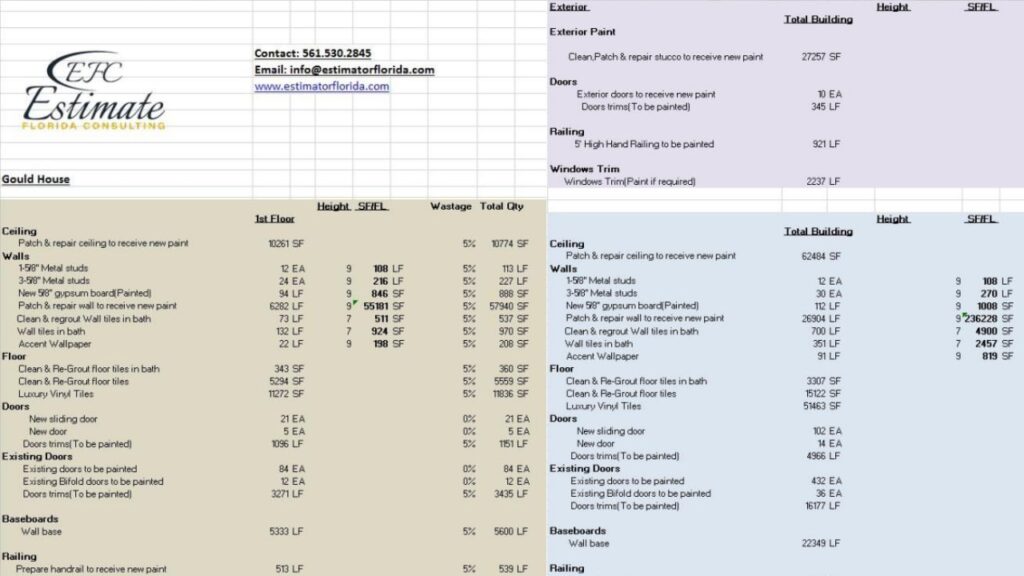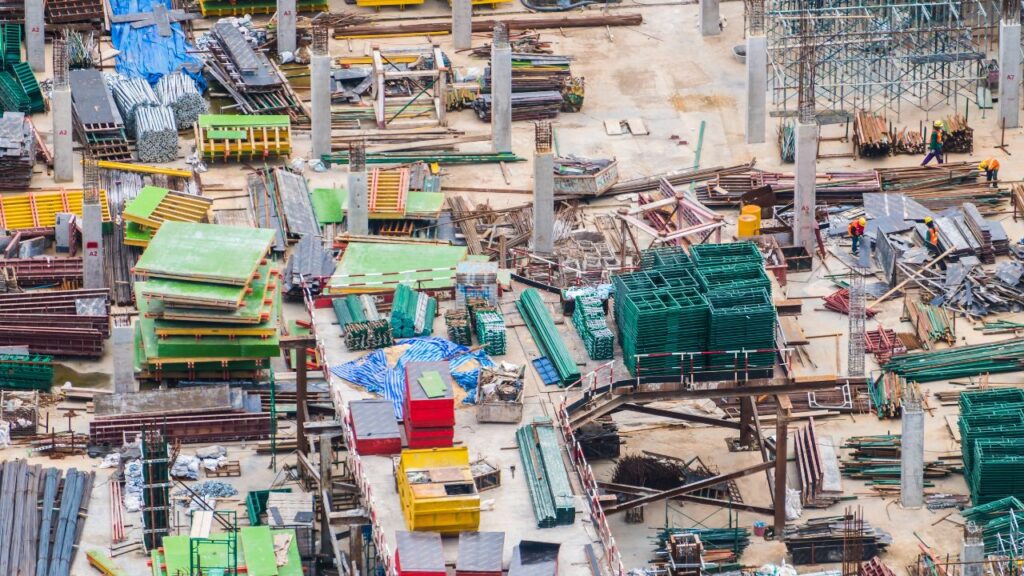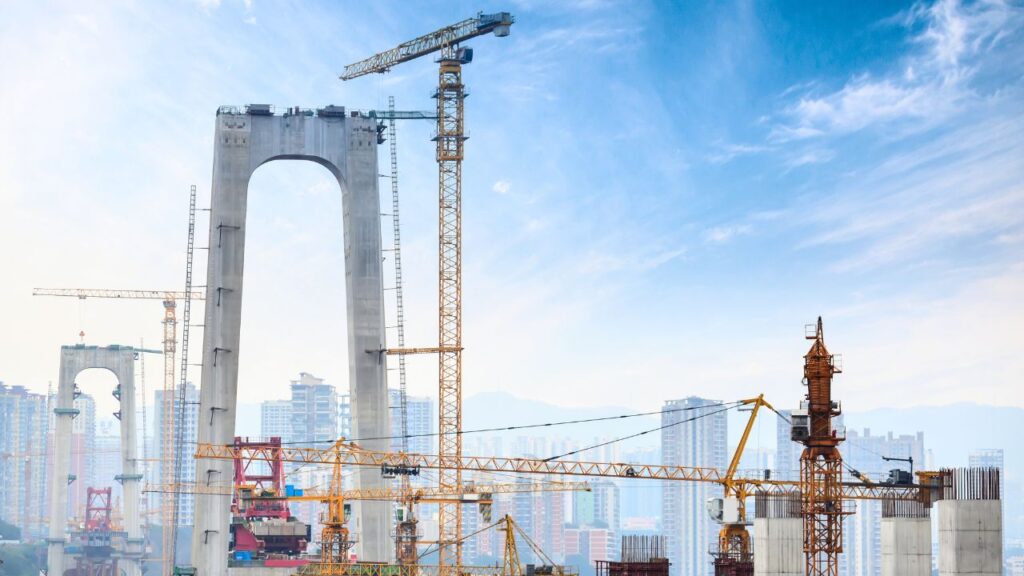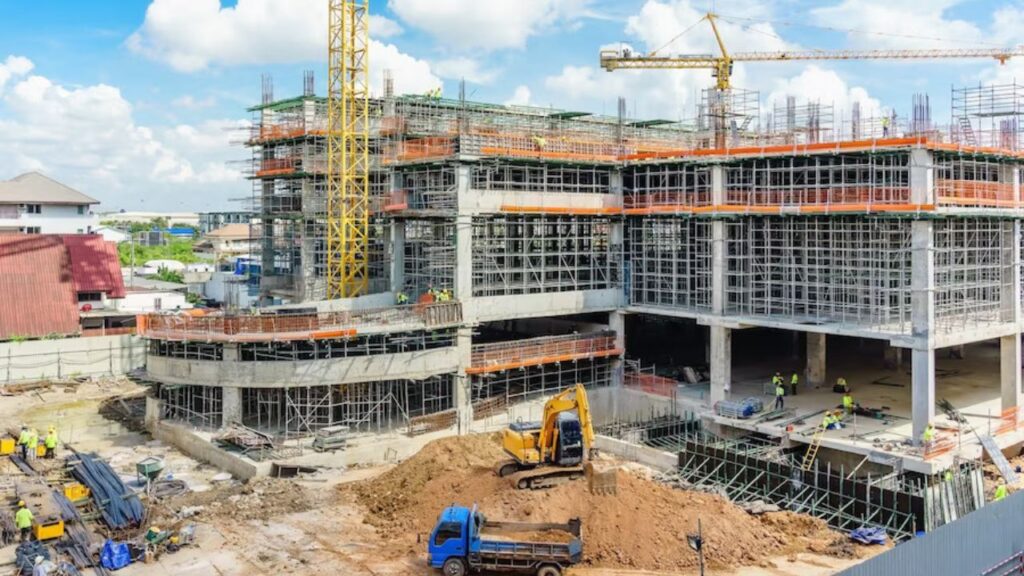A Wining Cost Estimate That Helps You To Win More Construction Projects

Estimating the materials required for a construction project is a critical aspect that directly impacts its success. The accurate estimation of materials ensures the smooth progress of the project, avoids delays, minimizes waste, and optimizes costs. In this article, we will explore the importance of material estimation in construction projects, the factors affecting it, various methods used, the benefits of accurate estimation, and the challenges involved. Additionally, we will discuss best practices for material estimation that can enhance the efficiency and effectiveness of the construction process.

Material estimation is the process of determining the quantities and types of materials needed for a construction project. It involves assessing the project requirements, analyzing design specifications, considering site conditions, and calculating the quantities of materials such as concrete, steel, bricks, and other components. Accurate material estimation is crucial for ensuring a successful construction project from start to finish.
The importance of material estimation in construction projects cannot be overstated. It serves as the foundation for effective project planning, budgeting, and procurement. Accurate material estimation enables project managers to order the right quantities of materials, schedule deliveries, allocate resources efficiently, and minimize wastage. It also helps in preventing shortages or excesses, which can lead to costly delays and disruptions.

Several factors influence the process of material estimation in construction projects. Understanding these factors is essential for achieving accurate estimations.
The scope of the project plays a crucial role in material estimation. The size, complexity, and intended purpose of the structure determine the quantities of materials required. Whether it is a residential building, commercial complex, or infrastructure project, the scope defines the scale of material estimation.
The design specifications outline the structural requirements, including dimensions, materials, and finishes. Precise understanding and interpretation of these specifications are necessary to estimate the quantities of materials accurately. Any deviations or modifications to the design can significantly impact the material estimation process.

The specific conditions of the construction site, such as topography, soil composition, and accessibility, affect material estimation. Challenging terrain or limited access can influence the transportation and delivery of materials, requiring adjustments in the estimation calculations.
Several methods are employed for material estimation in construction projects. Each method has its advantages and suitability based on project requirements and available resources.
Quantity takeoff is a commonly used method that involves measuring and quantifying the various materials required for construction. It requires detailed analysis of construction drawings, blueprints, and specifications to calculate quantities accurately. This method relies on the expertise of estimators who interpret the design documents and apply appropriate formulas and measurement techniques.
Advancements in technology have led to the development of specialized estimating software. These software applications assist in automating the material estimation process, improving accuracy, and reducing human error. Estimating software allows estimators to input project details, generate material quantities, and quickly make adjustments based on changes in design or scope.
Utilizing historical data from previous similar projects can be a valuable resource for material estimation. Analyzing data on material consumption, waste factors, and productivity rates provides a benchmark for estimating future projects. This method relies on the availability of reliable data and the ability to align it with the current project requirements.
Accurate material estimation in construction projects brings forth a multitude of benefits, evoking a sense of accomplishment, efficiency, and cost-effectiveness.
When material estimation is done with precision, it sets the stage for smooth project execution. The feeling of confidence sweeps over the project team as they know they have the right quantities of materials at their disposal. This assurance fuels their motivation and allows them to proceed with unwavering determination.
Efficiency becomes the cornerstone of a well-estimated project. The emotional satisfaction that comes from streamlined processes and optimized resource allocation is immeasurable. With accurate estimations, construction professionals can plan and schedule deliveries, ensuring that materials are available precisely when needed. This eliminates the frustrations of last-minute scrambles and the stress of unexpected delays.
Cost-effectiveness is another aspect that triggers a sense of accomplishment. Accurate material estimation saves precious financial resources by minimizing waste and preventing excessive material purchases. The exhilaration of staying within budget and maximizing the return on investment fills the air, creating an atmosphere of triumph and financial stability.
Moreover, accurate material estimation fosters a feeling of reliability and trust among project stakeholders. Clients are reassured when they witness the meticulousness in planning and the ability to deliver on promises. This trust deepens relationships, opening doors to future collaborations and opportunities for growth.
Maximize your construction business’s potential with our competitive financing options

While accurate material estimation offers a multitude of rewards, it is not without its share of challenges. Acknowledging and overcoming these challenges elicit a range of emotions, from frustration to perseverance and ultimately, a sense of accomplishment.
Insufficient or incomplete project information is a common hurdle in material estimation. It can be disheartening to navigate through a maze of uncertainties, deciphering fragmented details and filling in the gaps. However, with resilience and effective communication, estimators can collaborate with project stakeholders to gather the necessary information and make informed decisions.
Fluctuating material prices can be a source of anxiety and trepidation. The rollercoaster ride of price volatility challenges estimators to stay on top of market trends, ensuring that estimations remain accurate and aligned with the current economic landscape. The thrill of overcoming this challenge lies in the ability to adapt swiftly, utilizing historical data and expert knowledge to mitigate the impact of price variations.

The specter of human error looms over every estimation process, casting a shadow of doubt and frustration. The fear of miscalculations and oversights can be overwhelming. However, through attention to detail, meticulous review, and validation procedures, estimators can conquer this challenge and experience the elation of precision and accuracy.
Implementing best practices in material estimation not only instills confidence but also paves the way for successful construction projects. These practices exude a sense of professionalism, reliability, and efficiency.
Open and effective collaboration between project stakeholders is vital for accurate material estimation. Engaging in transparent communication channels evokes a sense of unity, ensuring that all parties are aligned on project requirements, design changes, and scope modifications. This shared understanding forms the foundation for precise material estimations.
Regular updates and revisions throughout the project lifecycle are essential to maintaining accurate material estimations. The satisfaction that comes from diligently monitoring project progress, adjusting estimates as needed, and keeping stakeholders informed is immeasurable. This proactive approach not only prevents potential setbacks but also showcases a commitment to excellence.
Implementing robust quality control measures instills a sense of pride and reliability. Conducting thorough checks and inspections at various stages of the project ensures that the materials used align with specifications and adhere to industry standards. This commitment to quality enhances the emotional connection between the construction project and its end-users.
In the intricate realm of construction projects, material estimation emerges as a vital cog in the wheel of success. Accurate estimations evoke a myriad of emotions, from confidence and efficiency to trust and cost-effectiveness. Overcoming the challenges of incomplete information, price fluctuations, and human error amplifies the feeling of accomplishment. By embracing best practices and maintaining open communication, estimators lay the groundwork for seamless project execution and stakeholder satisfaction.
If material estimation is incorrect, it can lead to delays, cost overruns, and disruptions in the construction project. It may result in shortages or excesses of materials, impacting the progress and quality of the work.
Technology plays a crucial role in material estimation by providing advanced estimating software that automates calculations, enhances accuracy, and reduces human error. Estimating software allows for efficient data management, real-time updates, and improved collaboration among project stakeholders.
No, material estimation is crucial in projects of all sizes. Whether it’s a small residential renovation or a large-scale infrastructure project, accurate material estimation ensures optimal resource allocation, cost control, and project efficiency.
Yes, accurate material estimation is instrumental in cost control. It enables project managers to plan budgets effectively, minimize waste, and avoid unnecessary material expenses. This leads to better financial management and cost optimization.
Improving material estimation skills requires a combination of experience, knowledge, and continuous learning. Keeping up with industry trends, utilizing technology, and seeking mentorship from experienced estimators can enhance your estimation abilities. Additionally, analyzing past projects and learning from mistakes helps refine estimation techniques and accuracy.
Here I am going to share some steps to get your construction cost estimate report.
You can send us your plan on info@estimatorflorida.com
Before starting your project, we send you a quote for your service. That quote will have detailed information about your project. Here you will get information about the size, difficulty, complexity and bid date when determining pricing.
We do construction cost estimating and prepare a detailed report for your project. At last you finalize the report and finish the project.
561-530-2845
info@estimatorflorida.com
Address
5245 Wiles Rd Apt 3-102 St. Pete Beach, FL 33073 United States
561-530-2845
info@estimatorflorida.com
Address
5245 Wiles Rd Apt 3-102 St. Pete Beach, FL 33073 United States
All copyright © Reserved | Designed By V Marketing Media | Disclaimer
IMPORTANT: Make sure the email and cell phone number you enter are correct. We will email and text you a link to get started.
By clicking “I Agree” above you give Estimate Florida Consultin express written consent to deliver or cause to be delivered calls and messages to you by email, telephone, pre-recorded message, autodialer, and text. Message and data rates may apply. You are able to opt-out at any time. You can text STOP to cancel future text messages.